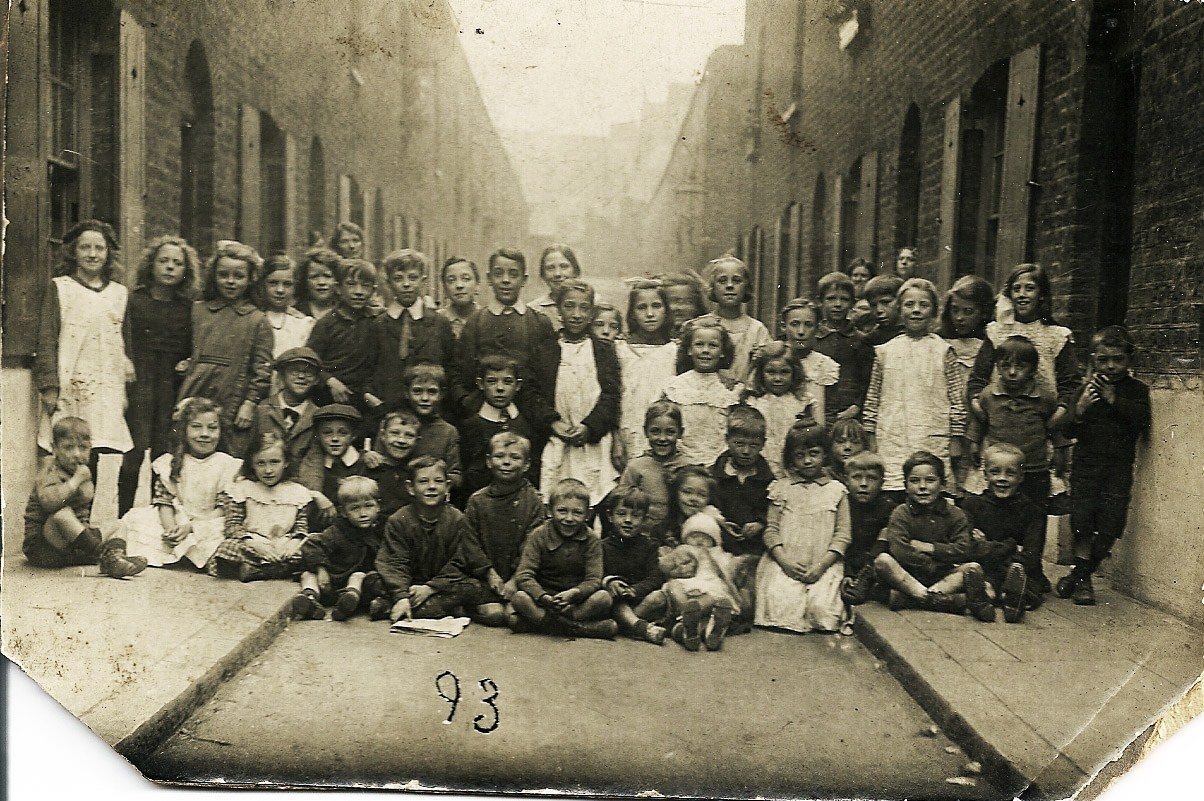In the 17th century, this area was open fields and a favourite recreation spot for Londoners who would cross the Thames by boat to escape the city. By the late 17th century a place of entertainment called Lambeth Wells had been established in the vicinity of Lambeth Walk at its junction with Lollard Street. Lambeth Walk was then a lane known as Three Coney Walk. John Rocque’s map of 1746 shows Three Coney Walk in an area of market gardens and sparse development.
The opening of Westminster Bridge in 1750 caused an increase in traffic which began to change the area. New turnpike roads were laid including Kennington Road. Although smart houses were built along Kennington Road, within a few decades the area behind it began to fill up with poor quality housing.
By the mid 19th century, the area was completely built over. It was by then notorious for its poverty and crime.
The poor housing conditions became a pressing concern after the First World War and slum clearances we instigated by the London County Council. This resulted in the replacement of Walnut Tree Place and surrounding streets with the China Walk Estate – building of this estate commenced in 1928 and was completed by 1934. Each block is named after famous British china manufacturers.

